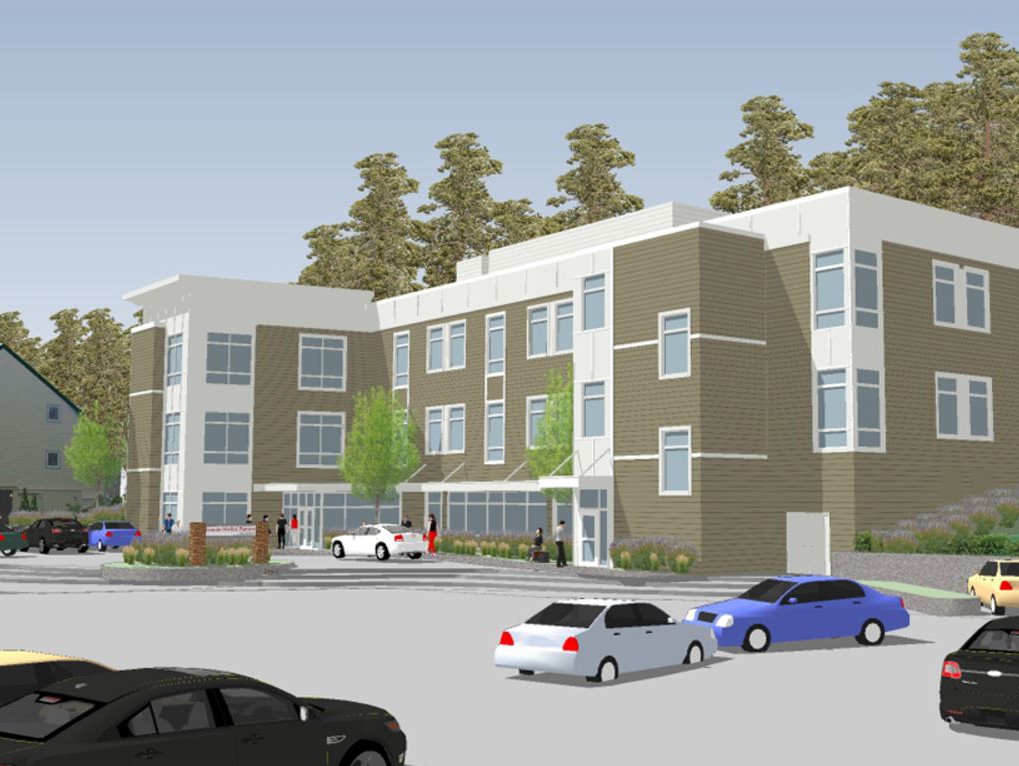LincolnHealth Breaks Ground on E4H-Designed MOB
The 39,800-square-foot facility slated for completion in June 2018 will consolidate primary, specialty and behavioral care services, which are currently spread among four buildings.
By Ariela Moraru
LincolnHealth is catering to the growing need for health care services in Maine, the state with the nation’s oldest population, with a median age of 44.6 in 2016, according to the Census Bureau. The company broke ground on a new $13.7 million medical office building at the Damariscotta, Maine, campus. Designed by E4H Environments for Health Architecture, the new 39,800-square-foot facility is slated for completion in June 2018. Hebert Construction Corp. is the project construction manager.
Located at 35 Miles St. in Damariscotta, Maine, the three-story facility will consolidate in a collaborative setting primary, specialty and behavioral care services, which are currently spread across four buildings. The ground floor will feature the largest community room on the campus at 1,000 square feet, dedicated to education and special events for both public and staff use, and the psychiatry practice for Maine Behavioral Healthcare. The first floor will include primary care, pediatrics and internal medicine, while the second floor will host a specialty practice area for OBGYN, surgery, orthopedics, ENT and urology.
E4H modeled the building after its recent design of Dartmouth Hitchcock Medical Center’s Nashua Clinic in Lebanon, N.H. With big windows and the incorporation of a perimeter corridor, the design brings in a lot of natural light. Exam rooms on both floors are universal, blurring practice lines between provider groups. The consult rooms on the perimeter can be converted to exam rooms, if needed, for additional flexibility.
MOB trends impacting design
Charlie Rizza, associate partner at E4H Environments for Health Architecture, believes that chronic disease management now requires more coordination between primary care physicians and specialists. “The incidence of chronic disease is growing more prevalent, putting greater strain on providers to keep a patient out of the hospital. Outpatient facilities that provide a broad level of patient care services in a setting that focuses on the whole person are way ahead today,” said Rizza, in prepared remarks.
Patients are looking for a one-stop shop. Independent physician practices are merging with larger health systems. “For patients with multiple health-related issues, there is a huge benefit to visiting one location for multiple services. Maine also has one of the oldest populations in the country, and the ability for seniors to access health care will in part be dependent on that convenience.”
Facilities should be ready to accommodate telemedicine, although capabilities may not be fully implemented.
E4H has also been contracted to design a 102,000-square-foot medical facility in Houston.
Image courtesy of E4H Environments for Health Architecture








You must be logged in to post a comment.